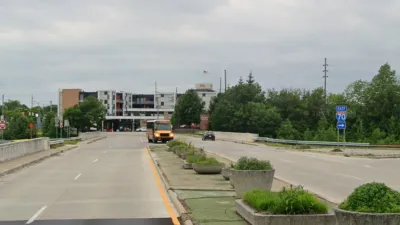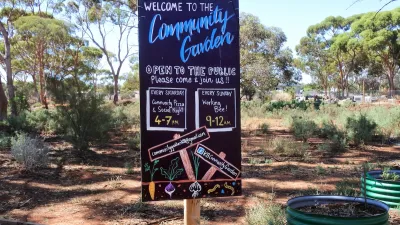In his "Dream City" column, Will Doig looks at the attributes making tactical urbanism the hot revitalization trend for municipal authorities across the country.
Although long associated with bottom-up and unsanctioned efforts to alter the urban environment, a confluence of factors have officials across the country incorporating the practices of tactical urbanism -- "that low-cost, low-commitment, incremental approach to city building" -- into their arsenal of improvement and revitalization tools.
As Doig notes, "In a way, thinking small is the next logical step in America's urban renaissance. When cities really started changing 10 or 15 years ago, the economy was booming and the Internet was a newfangled gizmo. Today, cities have less money but more ways to communicate, two conditions perfectly suited to more focused, low-cost planning. Now you can home in on a specific neighborhood (or even just a few blocks), find out what the residents there want or need, cheaply implement it on a trial basis, and make it permanent if it works."
One reason for the popularity of these nimble projects is their focus on function and program, rather than simply designing an attractive (and expensive) place and hoping that people will use it.
According to Ethan Kent, vice president of the nonprofit Project for Public Spaces (PPS), "The ‘Lighter Quicker Cheaper' method gets people focused on the uses. Typically people can't see how they can change the public realm because they feel like they're depending on big capital projects."
"But when city governments become tactical urbanists," says Doig, "it combines the best of both worlds: a space provided and sanctioned by the city, but one that the community can remake in its own image."
FULL STORY: Stop thinking big

Planetizen Federal Action Tracker
A weekly monitor of how Trump’s orders and actions are impacting planners and planning in America.

Map: Where Senate Republicans Want to Sell Your Public Lands
For public land advocates, the Senate Republicans’ proposal to sell millions of acres of public land in the West is “the biggest fight of their careers.”

Restaurant Patios Were a Pandemic Win — Why Were They so Hard to Keep?
Social distancing requirements and changes in travel patterns prompted cities to pilot new uses for street and sidewalk space. Then it got complicated.

Platform Pilsner: Vancouver Transit Agency Releases... a Beer?
TransLink will receive a portion of every sale of the four-pack.

Toronto Weighs Cheaper Transit, Parking Hikes for Major Events
Special event rates would take effect during large festivals, sports games and concerts to ‘discourage driving, manage congestion and free up space for transit.”

Berlin to Consider Car-Free Zone Larger Than Manhattan
The area bound by the 22-mile Ringbahn would still allow 12 uses of a private automobile per year per person, and several other exemptions.
Urban Design for Planners 1: Software Tools
This six-course series explores essential urban design concepts using open source software and equips planners with the tools they need to participate fully in the urban design process.
Planning for Universal Design
Learn the tools for implementing Universal Design in planning regulations.
Heyer Gruel & Associates PA
JM Goldson LLC
Custer County Colorado
City of Camden Redevelopment Agency
City of Astoria
Transportation Research & Education Center (TREC) at Portland State University
Camden Redevelopment Agency
City of Claremont
Municipality of Princeton (NJ)




























